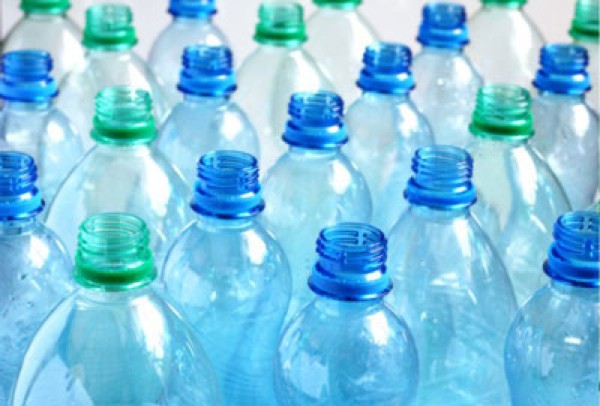 History
History  History
History  Creepy
Creepy 10 More Representations of Death from Myth, Legend, and Folktale
 Technology
Technology 10 Scientific Breakthroughs of 2025 That’ll Change Everything
 Our World
Our World 10 Ways Icelandic Culture Makes Other Countries Look Boring
 Misconceptions
Misconceptions 10 Common Misconceptions About the Victorian Era
 Mysteries
Mysteries 10 Strange Unexplained Mysteries of 2025
 Miscellaneous
Miscellaneous 10 of History’s Most Bell-Ringing Finishing Moves
 History
History 10 Great Escapes That Ended Right Back in Captivity
 Weird Stuff
Weird Stuff 10 Fascinating Things You Might Not Know About Spiders
 Food
Food 10 Everyday Foods You Didn’t Know Were Invented by the U.S. Military
 History
History 10 Most Influential Protests in Modern History
 Creepy
Creepy 10 More Representations of Death from Myth, Legend, and Folktale
 Technology
Technology 10 Scientific Breakthroughs of 2025 That’ll Change Everything
Who's Behind Listverse?

Jamie Frater
Head Editor
Jamie founded Listverse due to an insatiable desire to share fascinating, obscure, and bizarre facts. He has been a guest speaker on numerous national radio and television stations and is a five time published author.
More About Us Our World
Our World 10 Ways Icelandic Culture Makes Other Countries Look Boring
 Misconceptions
Misconceptions 10 Common Misconceptions About the Victorian Era
 Mysteries
Mysteries 10 Strange Unexplained Mysteries of 2025
 Miscellaneous
Miscellaneous 10 of History’s Most Bell-Ringing Finishing Moves
 History
History 10 Great Escapes That Ended Right Back in Captivity
 Weird Stuff
Weird Stuff 10 Fascinating Things You Might Not Know About Spiders
 Food
Food 10 Everyday Foods You Didn’t Know Were Invented by the U.S. Military
10 Everyday Things That Started Life As Oil
In 2011, global production of crude oil and natural gas reached a whopping 83.6 million barrels per day. As the world’s population increases, the need for such a commodity will increase along with it. Since petroleum is such a widely used substance, its unstable price affects us more than we can imagine. The list of petroleum based products is scarily endless – but here are 10 of the most common things made from oil:

Think of the new cream you just purchased – which you’re about to rub all over your face – as the decayed mass of millions of dead organisms. Since petroleum-based products can make up to 80% of a cosmetic’s ingredients, that’s essentially what you’re paying for. The most common components are oils, waxes, perfumes, dyes, and other petrochemicals (chemical products derived from petroleum). Petroleum byproducts are also found in your shampoos, conditioners, and hair dyes.

Due to its thermal stability and strength, synthetic rubber is sometimes preferred over latex as the chosen material in the world of manufacturing. The substance is commonly found in sporting goods, shoes, and tires. The average tire is made using around 8 gallons of oil. Synthetic rubber is also commonly used in wire and cable insulation. The main factor inhibiting its use is the high cost compared to natural rubber.

Aside from helping you live out your perverted sexual fantasies, lubricants influence your daily life whether you realize it or not: they’re found in a vast array of everyday items. A lubricant is simply a substance that reduces friction between moving surfaces, and its ability to do so is known as lubricity. Perhaps the most common lubricant is motor oil, which is used to protect internal combustion engines. Other common lubricants include grease and paraffin wax, the latter of which is found in candles. Since some lubricants can contain as much as 90% oil, they are almost a pure petroleum byproduct.

Many of today’s medications are derived from benzene, and benzene in turn is derived from petroleum. Almost all over-the-counter pain medications, such as aspirin, are based on this petrochemical. Although it seems counterintuitive, petroleum based products are used extensively in homeopathy. Some have related the rise in petroleum engineering to the rise of modern medicine.

If you look at the list of ingredients on a cleaning product, you’ll find a list of things you’ve never heard of and probably can’t pronounce. With components that can kill you or just make your table shine, the average cleaning solution is a mixture of some seriously synthetic chemical substances (their labels contain poison warnings for a reason). Many of these substances are petrochemicals – like glycerin, for example, which is commonly found in laundry and dish detergents.

Asphalt, also known as bitumen, is a semi-solid form of petroleum and can be either natural or refined. Its main purpose is to act as the glue between various minerals, creating a material known as asphalt concrete. There over 11 million miles of paved road in the world, which equates to a fair amount of oil. The sticky substance is sometimes confused with tar, which is a similar black material produced during the distillation of coal.

Petroleum based fibers are durable, readily available, and easy to maintain. Combined with the fact that they are generally cheaper than natural fabrics, synthetic fibers are becoming increasingly popular in the world of fashion and home goods. Although cotton may be the most common fiber in your underwear drawer, your sock drawer might tell a different story.
In addition to most of the clothes that don’t come in direct contact with your “region,” there are plenty of other fabrics that use synthetic fibers (think curtains, couches, carpet, etc.). Some of the most common types are rayon, nylon, spandex, acrylic, and polyester. So the next time you put on a piece of clothing, bear in mind that you’re practically wearing the black stuff.

No matter how organic you like your food, it’s hard to find food that hasn’t been touched by the oil industry to some degree. Petroleum byproducts are used in many synthetic fertilizers and pesticides. The use of petrochemicals is also widespread in food preservatives, flavorings, and colorings. Oil helps the agriculture industry produce more food, cultivate it faster, and keep it fresh for longer. It also helps to pollute the atmosphere. Petroleum-based polymers are incidentally also found in your chewing gum – a difficult truth to swallow if I’ve ever tasted one.

Nearly all plastics are made from petrochemicals – and plastic, needless to say, is absolutely everywhere. If you look around, you’ll find that a great deal of your things are made, at least partially, with plastic. From your iPod to that bottle of Mountain Dew you’re drinking, plastics form a bigger part of our daily lives than our own mother: annually, roughly 4-5% of the total U.S. petroleum consumption is dedicated to the manufacture of plastic products.

The most obvious example on this list, but justifiably number one: the combined sources of gasoline, diesel, and jet fuel account for around 72% of petroleum consumption. The petroleum refining process is complex, and these types of fuel may chemically differ by only the slightest degree. Despite this, different types of fuel can vary greatly in their physical properties and attributes, although they are essentially used for the same purposes.








